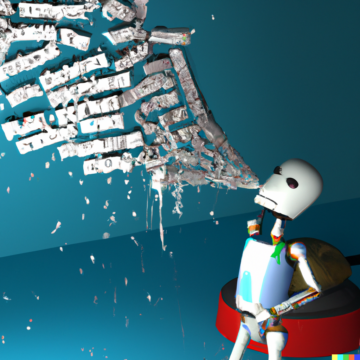India has never lacked stories. What it has lacked, for decades, is a practical way to move those stories across its many languages.
Sure, works by famous authors like M.T. Vasudevan are available in several Indian languages, but these are fortunate exceptions. For a reader to access works of lesser-known regional authors, options are much more limited: either read it in English or learn the language.
India’s linguistic divide won’t disappear immediately. Many languages still lack sufficient training data, and AI tools continue to struggle with idioms, humour and cultural nuance. But the direction of progress is encouraging. Tools designed initially for dominant languages are slowly being adapted to work across India’s full linguistic spectrum.
This is not a cultural gap as much as a technical one. For years, technical advancements, especially in the publishing world, have been centred around English, leaving the rest to play catch-up. The result is the inherent imbalance between publishing experiences of English and non-English writers.
For regional authors, reaching readers is not the only hurdle. Limited typesetting support, cost of translation, and distribution systems that don’t cater to their language stop their publishing journey before it begins.
AI is Beginning to Loosen Those Constraints
Experimentation with Indian-language AI tools has been on the headway for the last few years. For the first time, India’s linguistic diversity is shaping technology and not the other way around.
It’s easy to see the progress in parts of publishing that traditionally took most time to complete. Translation is one of them. Previously, human translation required hours of scouring the dictionaries, multiple, in some cases, to prepare a first draft that an editor could work on. That changes with tools like AI4Bharat’s IndicTransv2 and IndicXlit, armed with evolving datasets of vocabulary.
A similar shift is unfolding in audio and speech-driven technology. Transcribing interviews or oral histories used to be a painstaking exercise, especially in languages without strong commercial ASR support. But tools like Whisper and the speech models built under Bhashini now produce cleaner drafts from regional recordings, making it easier to create audio scripts that publishers can work with.
Digitisation is another area where AI has made the process more practical. OCR engines that struggled with the curves and conjuncts of scripts like Bengali or Urdu are now far more reliable. As a result, older manuscripts, community newsletters, and regional magazines, many of which existed only in fragile print, can now be scanned and restored with fewer distortions.
An area that’s still in early stages of advancements is discovery. Historically, writers have struggled to get their Indian language books to the right readers, while readers struggle to find non-English books, especially on online stores.
A growing number of cataloguing systems and library-tech experiments use AI to generate or improve metadata, classify books, and identify themes across languages. These systems aren’t fully accurate yet, especially for Indian languages, but they help multilingual catalogues become more navigable.
When a book’s topics, keywords and descriptions are available in more than one language, readers have a higher chance of finding it even if they search in a different script or tongue. It’s a gradual shift, but a meaningful one for regional visibility.
These developments do not replace human judgement though. They simply reduce the repetitive parts of the workload, giving linguists, editors and translators more space to work on nuance.
AI as a Creative Partner, Not a Substitute
There is a recurring fear that AI will flatten language and standardise creative expression. An even bigger concern is that AI will replace writers and translators. That’s not entirely the case. While AI takes on the mechanical tasks like early translations, draft summaries, basic metadata, humans deal with tone, region-specific idioms and context.
Take Tamil–Hindi translation as an example. Both languages have several words that map to similar ideas, but each carries emotional nuances that don’t always match directly. A mother’s pasam towards her child might translate best as mamta, not the blanket term pyaar. Getting these choices right depends entirely on who is speaking, the relationship being described, and the cultural context beneath the sentence. Something that comes easily to a human translator who knows both the worlds.
The same applies to voice, dialect, humour, and the rhythm of a sentence. What AI brings to the table is scale. A translation that previously required months of labour can now move to human review within days. This means a regional book can be prepared for multiple formats, print, e-book, audio, more efficiently. Small publishers and independent writers, who often lack resources, benefit the most from this shift.
A More Accessible Reading Economy
If current trends continue, the reading ecosystem could look very different in the near future. Books written in one regional language may no longer remain confined to that linguistic community. As AI becomes better at interpreting metadata and themes across languages, it can surface regional work to readers who wouldn’t otherwise encounter it. A coming-of-age story written in Kannada should, in theory, appear for someone exploring similar narratives in Bengali or English. Discovery becomes a matter of interest, not language.
Voice-led search is likely to grow too. Many Indians are more comfortable speaking than typing in their own languages. As voice recognition strengthens across Indian languages, searching for books or authors becomes easier for people who were never well-served by text-based systems.
Digitisation of older works adds another layer of reach. Community publications, long-lost serialised fiction and regional magazines stand a better chance of entering digital archives when OCR systems process their scripts accurately. This widens the pool of literature available to future generations.
India’s linguistic divide won’t disappear immediately. Many languages still lack sufficient training data, and AI tools continue to struggle with idioms, humour and cultural nuance. But the direction of progress is encouraging. Tools designed initially for dominant languages are slowly being adapted to work across India’s full linguistic spectrum.
If approached thoughtfully, AI can support a more inclusive reading culture, one where every language has the chance to be discovered.

Guest author Naveen Valsakumar is the Co-founder and CEO of Notion Press, a book publishing platform as well as a technology startup that aims to solve problems in book publishing and distribution by creating highly scalable solutions that work across the globe. Any opinions expressed in this article are strictly those of the author.












